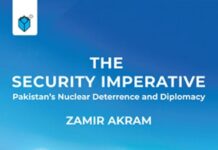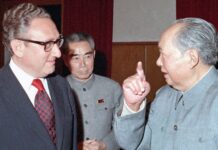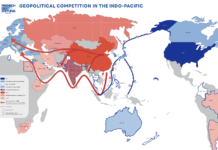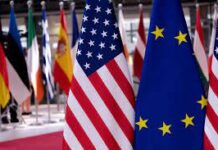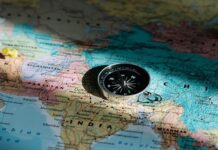YU Xiao
The world economy is essentially a network, self-woven by desires, productions, and currencies. In the past millenniums, no matter the imagination or cognition, the world was tightly fastened on the geosphere by gravity. The way human beings develop the economy is also deeply, though not entirely, shaped by geographical factors. The currency, derived from the Latin word currens, means the “condition of flowing”, Now it is known as a medium of exchange, specifically in a market circumstance, like money. However, the metaphor that money flows like liquid is acknowledged globally. Both economic behavior and social psychology about currencies still cannot get away from the traction of gravity, which is not only determined by the difference between aggregate demand and supply but also monetary policy.
Nearly five centuries ago, the age of exploration started with new technologies of shipping and navigation. This discovery was driven by the passion to seek new economic opportunities via a new trade route. The result is that continental silk roads are being replaced by maritime silk roads. Those corridors along mountains and rivers lost their glory, while the oceans took center-stage in human beings’ market behavior, both in times of conflict and cooperation. The age of exploration has exposed human beings and civilizations to external influences and influencers. That said, external strings, pulls and opportunities are linked to geography. The modern sovereign state system, which includes the independent system of customs, taxation, monetary, etc., became a mainstream ideology to safeguard and govern the common wealth of the people.
In this context, the currencies have been given more meaning, especially when we print the state leaders’ photographs and national emblem on them. The currencies do not just reflect our values and interests but also play the role of a propellant. They are akin to a wave of the ocean that promotes the ship of the world economy. However, the borders of our divided world also play the role of the embankment, which could prevent the most dangerous financial tsunami. It also reduces the liquidity of currencies. Fortunately, new technologies are transformative in nature. Cutting-edge technological specimens like aircraft, telecommunication, and internet, somehow release human beings from the shackles of geography and reconnect the continent with the ocean into a more integral economy. An initiative of jointly building the Silk Road Economic Belt and the 21st Century Maritime Silk Road, which is now well known as OBOR or BRI, is poised to revive the glory of the ancient trade network and integrate into the modern world economy. Pakistan, along with the Hindu River, extends from the Karakoram Mountain to the Persian Gulf. The China-Pakistan Economic Corridor is precisely the reconnection knot of the Indian Ocean and Central Asia.
New technologies are being used to improve infrastructure like the high-speed transportation network and 5th generation wireless systems, in a bid to ignite openness and integration. The gravity, however, still has its inevitable impact on this region in shape of geopolitics, deeply rooted in people’s mindset. A lot of one-sided stories and irresponsible rumors are undermining people’s mutual trust. Non-traditional threats like the epidemic disease transmitted by migrating animals, the climate change caused by fossil energy or the unpredictable disasters emanating from Outerspace, are adding to our threat matrix. Thus, it is a good time to talk about international currencies, which can provide a solid platform for global governance provided we sincerely look forward to a future-oriented world economy.
The Belt and Road Initiative originated in China, but it belongs to the world because the ideological foundation of BRI is the community of shared future for all humankind which is a universal value taught by different civilizations. The civilizations determine not only mankind’s “form” of economic struggle but also the “context” of its potential solutions. Not only do they provide the backdrop against which disruptive changes in our new age can be understood, civilizational teachings also widen our horizons and allow for the possible evolution of all human societies. This could include the Confucian conception of Datong, the Buddhist yearning for Maitreya, or the Abrahamic, Christian and Islamic eschatology that anticipate a coming age of abundance, amongst innumerable other possible world views. We should never ignore that, economic differences cause imbalances of power – differences in hard and soft influence whose justification, in turn, is veiled as splits in ethnicity, culture, or civilization. The implied anti-gravity view is one of many similarities we could figure out from those great thoughts and faithful beliefs.
As discussed before, even though we human beings have been living together for centuries with the ideological heritage shaped by gravity, the self-woven network of the economy and some great thoughts show a strong will to overcome all those physical and mental barricades. To foster the development of the economy, especially the cross-border economy, is not a matter of heroism, but one of realism with a long-term and futuristic perspective .In a more integral market, a more harmonious world, equality, and justice are as important long-term ideals as are reciprocity and interdependence. Pakistan and China have their challenges but have never forgotten those principles since the establishment of their diplomatic relationship 70 years ago.
We live in chaotic times. Living in an increasingly multipolar world confronted by the rise of populist unrest and distrust,we must continue to believe in a better future, one of greater prosperity, freedom, and respect for all. The value of almost everything on the earth is determined by beliefs. Despite all those differences in ethnicity, language, religion, even civilization, how could two sovereign states, a modern conceptual product, make real win-win cooperation? If Pakistan and China with all those obvious advantages in the name of “all-weather strategic partnership of cooperation”, could not find out a way, other countries, following realpolitik, will find it mighty difficult.
We sincerely believe that the process of financial cooperation on CPEC, such as the Internationalization of RMB, will be a small yet significant step. With its profound influence, it will continually give us strong confidence to face the uncertainty of the world economy. CPEC is not a challenger but an optimizer that can improve the existing situation tenderly. However, the project is impeded by a number of hurdles , some are technical and theoretical while others are political and ideological. The stakeholders of CPEC should be more courageous in taking bolder steps. Both countries should explore more untouched areas on bilateral cooperation. At this moment, the guarantee of CPEC’s success is based on a shared belief: Pakistan and China could jointly set the best example of cross-border cooperation towards economic integration.
YU Xiao is a PhD Candidate of Tsinghua University and Researcher at the CPEC
Research Center, University of Lahore.





